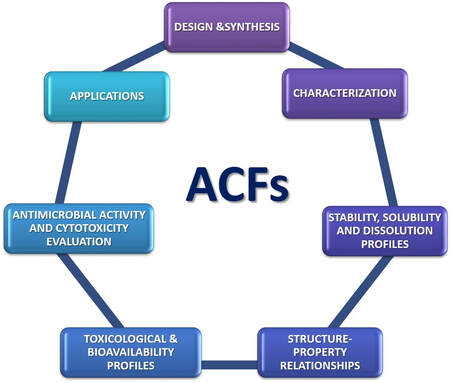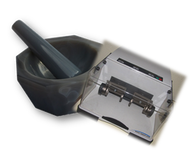Project
ACFs: Antibiotic Coordination Frameworks
as a way to enhance the bioactivity of the drugs
PTDC/QUI-OUT/30988/2017
LISBOA-01-0145-FEDER-030988
as a way to enhance the bioactivity of the drugs
PTDC/QUI-OUT/30988/2017
LISBOA-01-0145-FEDER-030988
|
AIMS AND BACKGROUND OF THE PROJECT
The goal of this project is to develop new metal-organic frameworks (MOFs) of antibiotics to increase their solubility, and consequently bioavailability, trying also to explore synergetic effects with the metal, such as zinc, silver and bismuth, to increase the antibiotic’s efficacy. Actually, both factors lead to enhanced efficacy. MOFs proposed herein are also a viable way for a more controlled delivery and release of antibiotics. Another important point of this project is that mechanochemistry is the main synthetic pathway proposed in this project. This is an environment-friendly technique that drastically reduces the amount of solvents and it has proven to be very efficient in different areas including MOFs’ synthesis. The interest on metal-organic frameworks towards pharmacological applications has been increasing, especially for controlled drug delivery and release. However, the coordination of metals can also be an alternative way to induce significant changes in previously known drugs, changing important properties such as solubility and bioavailability, with the further advantage that synergetic effects of the metal can be explored enhancing its performance. Bactericidal agents, including antibiotics, drastically reduced the number of deaths caused by infections over the last 70 years. However, due to their misuse and abuse, many microorganisms developed resistance mechanisms, causing only in Europe approximately 25000 deaths/year, an economic burden over 1.5 bilion € and productivity losses. Thus, there is a growing concern about the proliferation of these multi-resistant Gram-negative microorganisms against which the antibiotics have become less effective and it is indeed one of the great challenges of today’s society. |
KEYWORDS
Mechanochemistry; Powder X-Ray Diffraction; Single Crystal X-Ray Diffraction; Antibiotic Coordination Frameworks; Safe Metals; Bioactivity; Multiresistant microorganisms |







